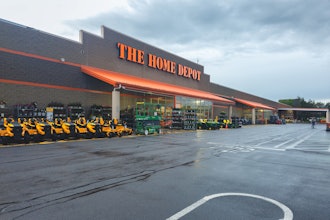WASHINGTON (AP) — First-time claims for unemployment benefits dropped last week for the third straight time, a sign the job market is slowly recovering.
The Labor Department said Thursday that initial claims for unemployment insurance fell by 7,000 to a seasonally adjusted 444,000. That's above economists' forecasts of 440,000, according to Thomson Reuters.
Layoffs have dropped back to pre-recession levels and employers have slowly resumed hiring as the economy recovers from the worst recession since the 1930s.
That has brought claims down from a peak of 651,000 in March 2009. But many economists are concerned that claims haven't fallen faster this year. Instead, they have fluctuated around 450,000.
That's above the 425,000 level that many economists think claims need to drop below to signal sustained job growth.
The four-week average of claims, which smooths fluctuations, declined 4,750 to 458,500, its first decrease in five weeks.
Several recent economic indicators show that the recovery is gaining strength. But so far the economy hasn't grown fast enough to bring down the unemployment rate.
The government will release the April jobs report on Friday. Analysts forecast that it will show the jobless rate remained stuck at 9.7 percent for the fourth straight month, even as employers add 200,000 jobs. As many as half those new jobs may be temporary Census workers carrying out the 2010 Census, economists say.
One factor keeping the unemployment rate high is that thousands of people have re-entered the labor force after giving up on job hunts during the recession. When jobless people don't look for work, they aren't counted in the official unemployment rate.
Another factor is high productivity growth. In a separate report, the Labor Department said productivity grew by 3.6 percent in the first three months of this year, much more than forecast.
Higher productivity helps boost living standards in the long run, as more productive workers can demand higher wages. But it also enables employers to delay hiring and increase output from their existing workforces.
Employers added 162,000 jobs in March, the most in three years. But it takes about 125,000 new jobs every month just to keep up with population growth. New jobs need to be added at a faster pace to bring down the unemployment rate.
Several recent economic indicators show that the recovery is gaining strength. A trade group of purchasing executives said Monday that the manufacturing sector expanded in April at its fastest pace in nearly six years.
The group, the Institute for Supply Management, also said in a second report Wednesday that the service sector also grew in April, the fourth straight month of growth.
Overall, the economy expanded at a 3.2 percent pace in the January-to-March quarter, the Commerce Department said Friday, the third straight quarter of growth.


















